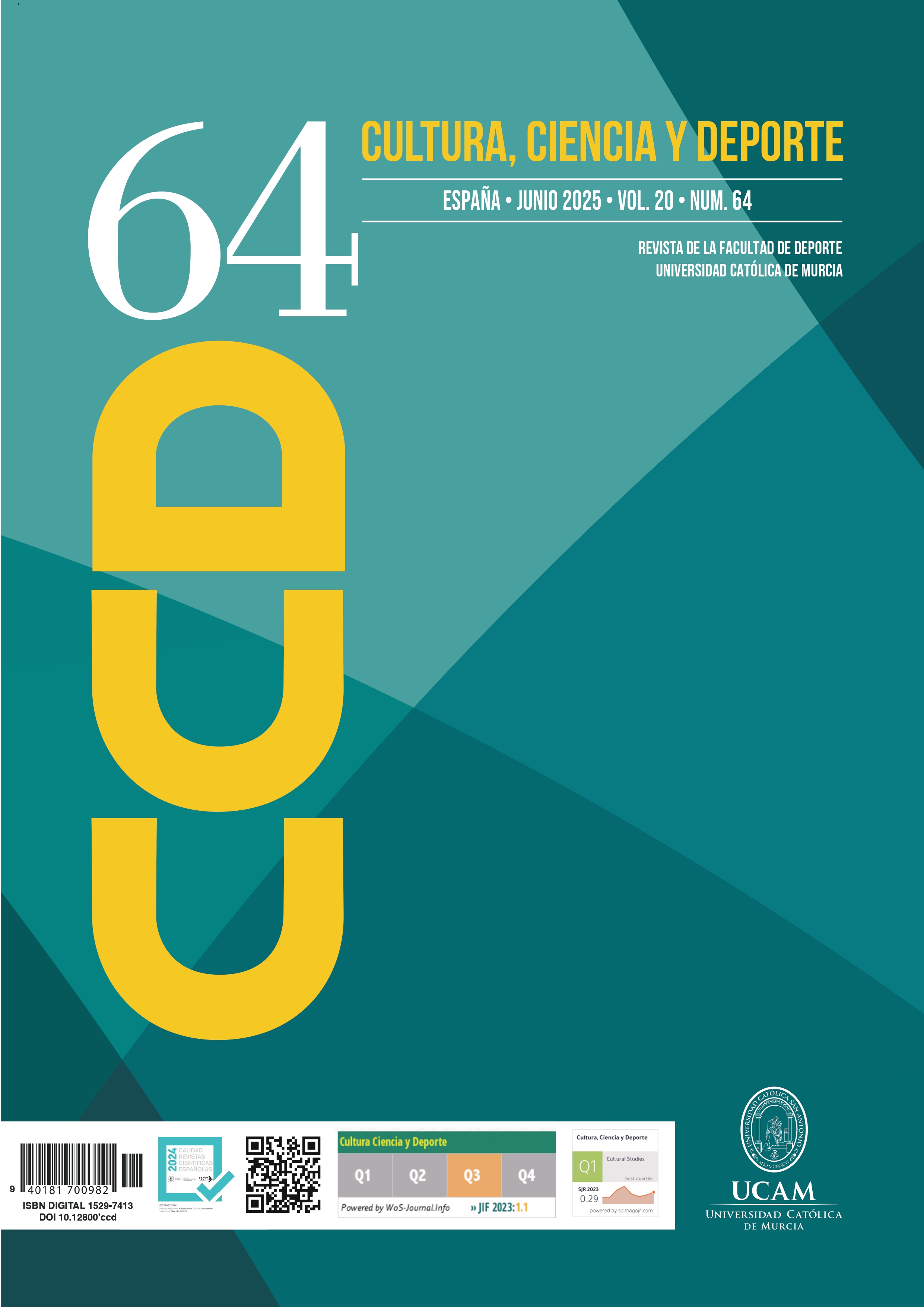Physical Demands in Female International Beach Handball Competition Depending on Player’s Position Differentiating Game Quarters
DOI:
https://doi.org/10.12800/ccd.v20i64.2282Abstract
during competition. The playing time was divided into five-minute periods in order to make comparisons between the variables under study; furthermore, these
demands were analyzed in each playing position. Fifteen players of the Spanish women’s national team were equipped with a global positioning system (GPSport) during five official and three unofficial matches.
The international beach handball players covered 280.60 ± 139.25 meters in the first set and 351.64 ± 129.57 meters in the second set, reporting significant
differences between both sets (F = 6.14; p = .01). The greatest distance covered was in zone 2 (from 6 to 9 km-h-1) and zone 4 (from 9 to 12 km-h-1). According to
the playing position, it is reported that the defense position is the one that travels the greatest distances per set 346.78 ± 133.00 meters and there are significant
differences in the distance traveled, accelerations, decelerations and sprints between the wing, defense and fixed wing positions. This study provides information to coaches and their technical staff to optimize the training load and individualize the physical demands of their handball players
according to each playing position. Fifteen players of Spanish national female team were equipped with a global positioning system (GPSport) during five official and three nonofficial matches. International beach handball players covered 280,60±139,25 meters in the first set and 351,64±129,57 meters in the second set, reporting significant differences between both sets (F=6,14; p=,01). The greatest distance travelled is in zone 2 (from 6 to 9 km·h-1) and zone 4 (from 9 to 12 km·h-1). According to playing position, it is reported that the defender position covers the greatest distances per set 346,78±133,00 meters and there are significant differences in the distance covered, accelerations, decelerations, and sprints between the wing, defender and fixed wing position. This study provides information for coaches and their technical staff to optimize training load and individualize the physical demands of their female handball players depending on each playing position.
Published
How to Cite
Issue
Section
License
Copyright (c) 2025 Creative Commons Attribution License

This work is licensed under a Creative Commons Attribution-NonCommercial-ShareAlike 4.0 International License.
The authors who publish in this journal agree with the following terms:
- The authors retain the copyright and guarantee the journal the right to be the first publication of the work as well as licensed under a Creative Commons Attribution License that allows others to share the work with recognition of the authorship of the work and the initial publication in this journal.













